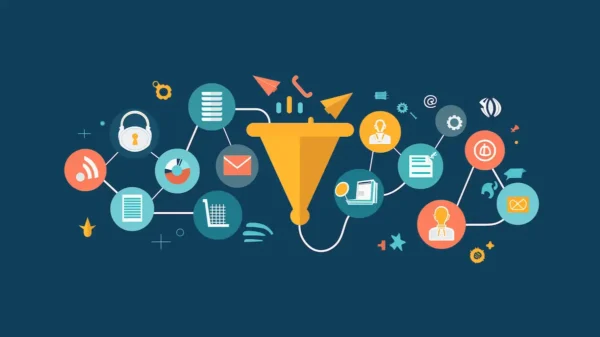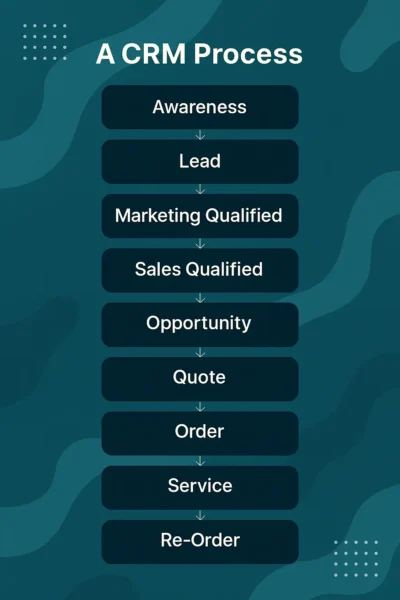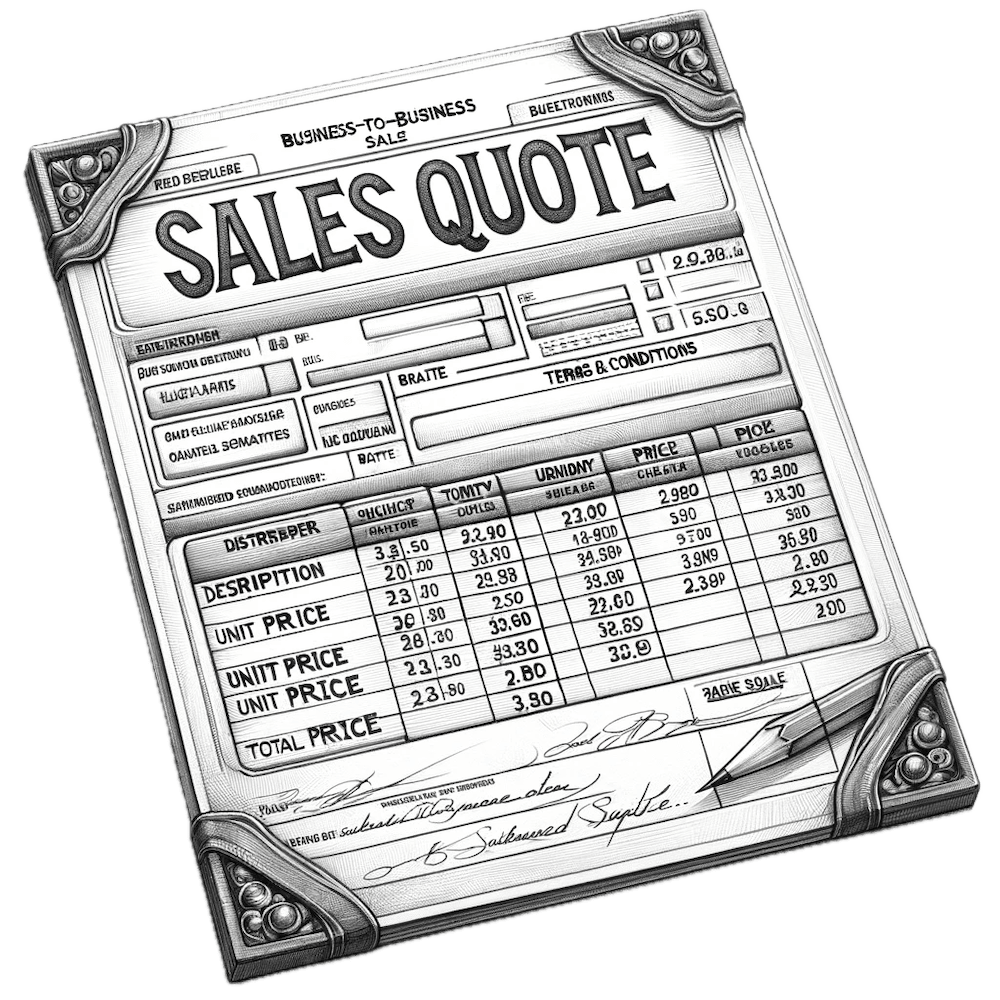A mental framework of a CRM process can help guide your CRM planning efforts. Thinking in terms of processes can lead to better technology decisions.
One dictionary definition of a process is “a series of actions or steps taken to achieve a particular end.”

There are multiple viewpoints regarding what a customer relationship management process is. Our perspective of the CRM process is as follows:
The steps a person takes, from when they become aware of your product or service to when they or their organization becomes a loyal customer
This person (a prospect) isn’t necessarily aware of all the steps since the vendor has an internal view of the end-to-end process.
Unlike many business processes, which almost always go through to the end, a CRM process often stalls out or ends abruptly for one reason or another.
A lead or prospect may go dark on a vendor’s salesperson, or a vendor rep may disqualify a prospect when they determine there’s not a fit.
Today, marketing and sales teams work more synergistically than ever. This is partly software-driven.
Vendors like HubSpot, GreenRope, and Salesforce have integrated the traditionally separate marketing automation function with the sales force automation function.
This integration has extended the front end of the CRM process.
CRM Process Steps
Here are some typical steps in a CRM process. The precise steps will vary from business to business.

Awareness
Awareness once resulted from activities outside of CRM. The marketing team managed its planning and execution in a separate system.
The lines between CRM and marketing automation are blurring with today’s all-in-one systems.
Now, tasks like the following can be managed in CRM.
- Content planning & execution
- Content calendar
- Social posts & other redistribution
- List & nurture emails
Lead
In B2B, a website visitor who converts by filling out a form, emailing, or calling is considered a ‘Lead’ or an ‘Information Qualified Lead.’
A process or user usually records this person’s data in the Lead table or object.
Marketing Qualified Lead
If Leads are plentiful, the marketing department doesn’t want to assign specific Leads to salespeople unless they are deemed ‘Marketing Qualified.’
The criteria for determining what a Marketing Qualified Lead (MQL) is varies.
Sales Qualified Lead (a.k.a. Prospect)
At this stage in the CRM process, a salesperson assigned an MQL determines whether the Lead is qualified from a selling perspective.
This may involve multiple outreach attempts and one or more conversations to determine BANT (Budget, Authority, Need, Timing).
When a salesperson qualifies a Lead, they may or may not create an Opportunity as part of the step.
Opportunity
An Opportunity is typically created when a salesperson has made enough progress with a Prospect (and the Prospect’s cohorts in a complex sale) to determine that a revenue event will occur in a predictable timeframe.
Often, Opportunities are created too early in the CRM process. The result is a sales funnel clogged with low- to no-probability Opportunities.
Quote
A quote is often tied to an Opportunity. Whether this is a structured quote using product tables and logic or just a single number depends on the product or service being sold.

Depending on the industry and complexity of the quotation process, a CRM system may link out to a third-party Quote-to-Cash solution.
Order
When a prospect accepts a quote, the quote can be converted into a Sales Order.
A CRM Order is similar to an Opportunity, but customer operations enrich the Order record with details about product or service delivery.
A financial subprocess starts when the Order information is transferred to accounting.
Service
Depending on what a vendor sells, the initial customer service component can be as simple as shipping a product or as complex as an extensive onboarding process.
There may be an on-site installation process.
New customer onboarding can be considered a subprocess of the CRM process.
Service also encompasses answering customer questions, resolving billing issues, and providing tech support.
Re-Order
Getting repeat orders from existing customers is easier and less expensive than getting orders from a new customer.
New customer acquisition costs at least five times more than retaining existing ones.
Loyalty
Customers who are satisfied with a company’s product or service and value the vendor relationship become loyal customers.
These customers make ongoing purchases, provide testimonials, and refer clients.
There is no hard and fast rule for the best CRM process in a given organization. Your process steps may vary from the above.
However, defining your processes up front is an essential part of your CRM strategy and will help maximize the business benefit of implementing CRM software.



